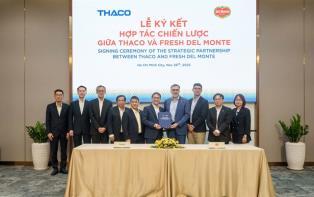Drawing on experience from Typhoon Yagi in 2024, PVI Insurance activated its emergency plan as soon as Bualoi formed offshore.

HÀ NỘI — Central Việt Nam is recovering from the severe impacts of Typhoon No. 10 (Bualoi), which struck late on September 28. The storm caused extensive damage to homes, infrastructure and farmland from Hà Tĩnh to Quảng Trị. In its aftermath, insurers have played a crucial role in easing financial pressure, stabilising businesses and supporting communities.
Building on its experience from Typhoon Yagi in 2024, PVI Insurance activated its emergency response plan as soon as Bualoi formed offshore. Response teams worked around the clock to assist customers and minimise losses. The company introduced a fast-track claims process that reduced paperwork by 30–40 per cent, and in some cases by as much as 90 per cent.
This enabled early approval of repair estimates, swift decisions on the disposal of damaged goods and advance payments to policyholders. Hotline and survey teams operated 24/7 to ensure no case was left pending.
Even with roads blocked and flights disrupted, PVI assessors reached affected areas to inspect damage, gather reports and advise customers. Cooperation with independent loss adjusters and contractors helped accelerate assessments and guarantee transparency.
Motor insurance accounted for the highest number of claims. By October 3, PVI had received 187 cases with estimated losses of about VNĐ3.7 billion (US$140,000). Most involved vehicles flooded while on the road or parked, as heavy rains left many streets under water, damaging engines and electrical systems.

PVI set up a 24/7 hotline and deployed more surveyors to guide customers, coordinate towing and help reduce losses. Its online claim system allowed people to report and track progress in real time.
“A car is not just a vehicle. It is part of a family’s life and work,” said PVI surveyor Đỗ Thế Thức. “We must act fast to protect what people value.”
In property and engineering insurance, PVI recorded about 150 loss cases, with early compensation reserves of nearly VNĐ850 billion. The most serious was the collapse of the coal storage facility at Vũng Áng 2 Thermal Power Plant in Hà Tĩnh. The structure was almost completely destroyed, causing losses of more than $20 million.
“Even a solidly built facility could not withstand the storm,” said Lê Hải Phong, deputy head of PVI’s Claim Department.
“We are working closely with all parties to assess damage and make early advance payments to help businesses resume operations.”
PVI is working with international loss adjuster Lloyd Warwick and relevant agencies to accelerate assessments and prepare compensation plans. The company expects to apply the same measures used after Typhoon Yagi to ensure quick and fair settlements.
After Typhoon Yagi in 2024, PVI made its first advance payments only ten days after the storm. Within 45 days, all interim payments were completed. After one year, 80 per cent of claims had been fully settled, with total payments and advances nearing VNĐ1 trillion. Major clients included VinFast, Jinko Solar Việt Nam, Vietnam–Singapore Energy Solutions, Oshung Vina and Wyndham Ha Long Hotel.
Typhoon Bualoi brought winds of level 10-11, gusting up to level 13. Waves reached five metres, and rainfall of 100–250 millimetres caused widespread flooding, with some areas recording over 400 millimetres. Thousands of houses lost their roofs, crops were submerged and traffic was disrupted. Hundreds of communes faced flash flood and landslide warnings as the storm swept through the region.
Experience from past disasters has strengthened PVI’s readiness to handle large-scale claims. Amid increasingly severe storms, PVI’s readiness and decisive response continue to prove its role as a “financial shield” for communities and businesses. — VNS





